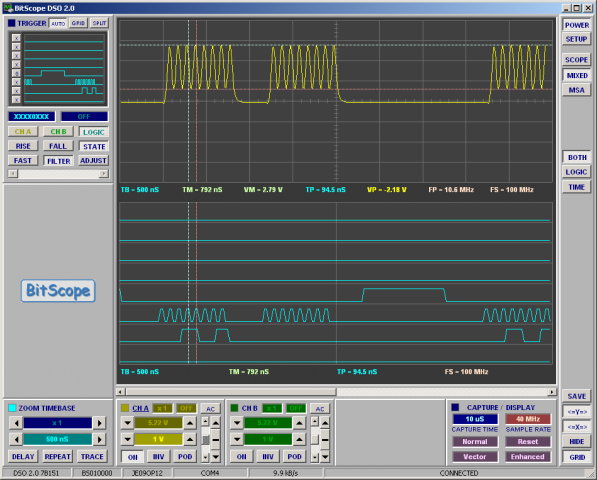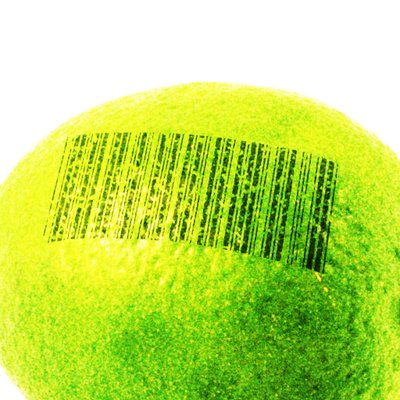
For a while now, I’ve been looking for a replacement for my ancient 50 MHz Hitachi analog scope. This scope has served me well for the 10+ years I’ve owned it, but it’s kind of a junker. Slow, out of calibration, flaky triggers… I’d could probably get a similar scope for about $15 on eBay.
As much as I love the instant response and tactile feel of analog scopes, I’ve been doing several projects lately that really could benefit from a digital scope and a logic analyzer. I’ve frustrated myself for hours trying to capture one-shot signals with my analog scope, when a digital scope would have made the job a piece of cake.
So, I finally bought a Bitscope BS100U. It’s a PC-based oscilloscope. I was initially really skeptical about PC-based scopes, but they do have a few big advantages: They don’t hog desk space, it’s easy to export data to your own tools or capture screenshots for the web, and they tend to be cheaper than a standalone DSO with similar features.
Why a Bitscope, instead of something by Pico or another of their competitors? The Bitscope is really hacker-friendly. The manual includes full schematics, their communications protocol is documented online, and there’s a free API for extending their software. Did I mention it’s cross-platform? (Windows and Linux)
Best of all, the Bitscope is a mixed-signal scope. The BS100U has two analog inputs and eight digital inputs. I’ll still need to pull out my homebrew “Saxoscope” for high-speed continuous logic capture, but the Bitscope’s MSO mode should be more than sufficient for day-to-day use.
So, I just got it in the mail today. I may post a full review once I’ve had more time to use it. My initial impressions:
Pros: Small, opto-isolated, mixed-signal, easy to set up, good build quality, fairly powerful software, open design, cheaper than a Tektronix digital scope.
Cons: Kind of slow, software UI is pretty odd, more expensive than some competing PC-based scopes ($595 without any probes/pods). Bitscope web site is very rarely updated.
(Screen shot of some mixed-signal capture from the 10 megabit SPI interface on my Propeller ethernet driver)

